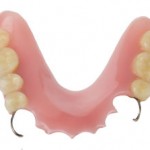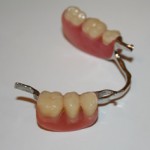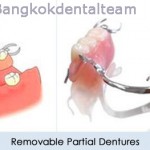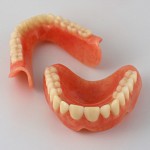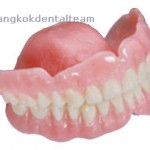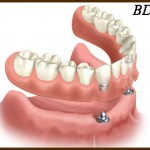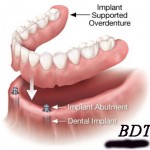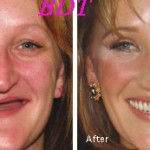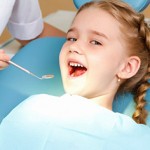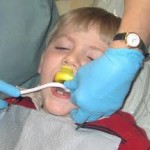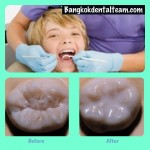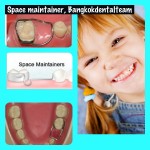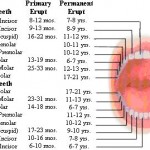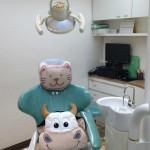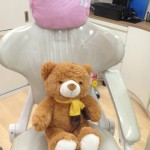Archive for the ‘Dental Articles’ Category
-
Get yourself ready for braces
-
Lumineers
Lumineers
LUMINEERS™ are porcelain veneers that offer the painless way to a permanently whiter and perfectly aligned smile. Your LUMINEERS™ dentist can apply these contact lens-thin “smile shapers” to teeth without any grinding or shaving, transforming teeth into a naturally beautiful smile that looks perfect for every individual. LUMINEERS can even be placed over existing crown or bridgework without having to replace them.
LUMINEERS™ are contact lens-thin and are placed over existing teeth without having to remove painful tooth structure* (unlike traditional veneers.) LUMINEERS™ is the painless, permanent cosmetic solution for stained, chipped, discolored, misaligned teeth or spaced teeth and are proven to last, in an on-going study, for up to 20 years!** (results available upon request). Use Cerinate Porcelain LUMINEERS™ to change your smiles and lives.
LUMINEERS™ has developed the contact lens thin porcelain technology that preserving your natural tooth structure. And that means you can correct a wide variety of unsightly dental distortions or conditions, such as:
– Tooth discoloration
– Noticeable gaps
– Permanent stains
– Broken or misshapen teeth
– LUMINEERS can even bond to existing crowns and bridgework without having to replace them
Before
Teeth are stained, slightly misshapen with spaces in-between. An impression is made and the m old is sent to the Cerinate Smile Design Studios where
After
-
Oral and Maxillofacial Surgery
Oral Surgery
What is Oral Surgery?
Oral and maxillofacial surgery is the specialty of dental practice that deals with the diagnosis and surgical treatment of diseases, injuries and defects of the mouth, jaws, face and related structures. This includes the removal of impacted and decayed teeth, placement of dental implants, biopsy and removal of cysts and tumors of the mouth and jaws, treatment of facial trauma and reconstructive jaw surgery.
TOOTH EXTRACTION/REMOVAL
Non – Surgical Extraction
This method will be suggested when the affected tooth is already loose. Non-surgical extraction is performed by placing gentle traction and rotation on the affected tooth with dental forceps or needle holders. Excess tissue is removed as carefully as possible so as to avoid fracture. Once clean, the alveolus can be filled with osteoinductive materials, impregnated resins, or the newer bone morphogenic materials. After filling, the alveolus is sealed. Following the procedure we will try and make you as comfortable as possible by providing home care support including antibiotic therapy, pain management, and dietary advice.
Surgical Extraction
Surgical extraction is performed on non-mobile teeth with normal or near normal attachment levels. If your dentist has studied your radiographs and concluded that extraction is necessary the next step will be the creation of a surgical flap. Your highly skilled oral surgeon will make a precise incision providing room to remove the alveolar bone. Following this the surgeon will isolate and gently elevate the roots of your tooth. After sufficient bone removal and elevation, the tooth root should become mobile. Small dental forceps or needle holders are used to grasp the tooth crown and then rotate the tooth on its long axis. Your surgeon will rotate the tooth to the point of resistance for 20 to 30 seconds. The rotation is then reversed and again held for 20 to 30 seconds. By using slow, continuous forces, the fibers are torn and the tooth becomes loose enough for gentle traction to remove it from its socket.
After the roots have been successfully removed, a post-extraction radiograph will confirm that the operation has been successful. The alveolus can then be treated and sealed in the same way as practiced in the non-surgical extraction.
Wisdom teeth
Wisdom teeth serve no useful function and will often cause damage because when a wisdom tooth becomes partially exposed through the gums it cannot be cleaned properly and can collect food debris, bacteria and plaque around itself. This can result in tooth decay, gum disease, infection and abscess of not only the wisdom teeth, but of the nearby molars and surrounding gum tissue. The molars in front of the wisdom teeth are sometimes lost because of cavities and gum disease caused by the inability to clean the wisdom teeth properly. Cyst formation and other destructive pathology are also seen around impacted wisdom teeth. There may be pain and swelling, or you may have no symptoms at all, even though the other teeth in your mouth may be at risk of damage.
If removal of the wisdom teeth is necessary, the procedure is recommended in the late teenage years, before the roots are completely formed. Surgical procedures in general are better tolerated when one is young and healthy, and the gum tissues tend to heal better and more predictably when young. Most people experience minimal disruption of their normal routines, and time off from work or school is usually minimal. At this point it is worth noting that the removal of wisdom teeth can be of great benefit to your ultimate oral and general health.
Wisdom Teeth Problems
Whether wisdom teeth cause your mouth harm depends on several factors, including the size of your jaw and how your wisdom teeth grow in. Sometimes, problem wisdom teeth cause symptoms like pain and swelling. Or you may have no symptoms at all but the other teeth in your mouth could be at risk for damage.
These are the most common complications of leaving impacted wisdom tooth in place:
1. Decay, or dental caries. The positioning of wisdom teeth makes them hard to clean and hard to repair.
2. Fluid filled cysts. These can form from remnants of tissue around the crown of the tooth, becoming large and painful.
3. Infection of the surrounding gum tissue. This condition, pericoronitis, is most likely to occur if the tooth is partly erupted or very close to the surface.
Instruction for After Dental Extraction
Post Operative Care For Dental Surgery.
1.After tooth extraction or oral surgery,bite on this gauze for one or two hours.
2. Do not Spit or put ice chips on the incision.
3. Rinse your mouth with warm salt or soda water, and Brush your teeth very gently for the first two days.
4. If the pain increases 2 days after surgery,Please contact your dentist.
5. Consume a liquid or soft diet but use straws.Avoid hot and spicy food and don’t smoke.
6.Stitches may be removed within 5-7 days
-
Root Planing
Root Planing
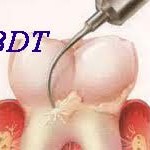
Root planing involves smoothing the root surfaces of your teeth with thin curettes so gum tissue can more firmly reattach to roots that are clean and smooth to prevent tooth loss and sensitivity problems. The procedure makes it more difficult for plaque to accumulate along the root surfaces. Because this procedure goes deeper than a regular cleaning, your mouth may be numbed. The cleaning may take two visits to complete. Depending on the extent of the disease you may need one or more sections (quadrants) of the mouth to be treated with scaling and root planing. Treatment may require one or more visits.
-
Gum Surgery
Crown Lengthening
Crown Lengthening and Cosmetic Treatment
Crown lengthening is used to correct what’s commonly referred to as a “gummy smile” that hides the beautiful teeth underneath the gums. A gummy smile is apparent when the gum line appears to be creeping down over the teeth, making them appear short. During this procedure, excess gum and bone tissue is reshaped to expose more of the natural tooth and more beautiful smile. This can be done to one tooth, to even your gum line, or to several teeth to expose a natural, broad smile.
Crown lengthening is a simple surgical procedure which adjusts the position of the gum around the affected tooth.
-
Occlusion & Temporomandibular Disorders (TMD)
Occlusion and Temporomandibular Disorders
Your tooth and gum are very important, so do your muscles of
mastication, and jaw joints. Sometimes, some people grind their
teeth at night time. This can result in tooth wear, pain in muscles
of mastication and jaw joints. If you are one of those who suffer
from this problem, please do not hesitate to meet our specialist
Dental Occlusion or Malocclusion is an extremely common dental condition caused when the biting surfaces of the teeth do not properly fit together. The way teeth grow out of the jaw is influenced by a number of factors, as heredity, shape of the jaw, and certain environmental conditions can lead to uneven variations in biting surface. If left untreated these variations in jaw structure can eventually cause problems with biting, gum health, speech development, and the ability to maintain proper oral hygiene.
Most dental occlusion are treated after adult teeth begin to grow in, as the bones and teeth are far more pliable than those of adults. In some cases the dentist will have to remove one or more permanent teeth to ensure proper growth and expansion of other teeth. Great care is exercised to prevent future impaction or irritation by other teeth that have yet to erupt, so many people who have malocclusion are required to wear a retaining device or mouthpiece to prevent complications.
Bruxism
Bruxism is the technical term for grinding and clenching that abrades teeth and may cause facial pain. People who grind and clench, called bruxers, unintentionally bite down too hard at inappropriate times, such as in their sleep.
People who have otherwise healthy teeth and gums can clench so often and so hard that over time their teeth become sensitive. They experience jaw pain, tense muscles and headaches along with excessive wear on their teeth. Forceful biting when not eating may cause the jaw to move out of proper balance.
Temporomandibular disorders (TMD)
Temporomandibular disorders (TMD) occur as a result of problems with the jaw, jaw joint and surrounding facial muscles that control chewing and moving the jaw. These disorders are often incorrectly called TMJ, which stands for temporomandibular joint.
What Is the Temporomandibular Joint (TMJ)?
The temporomandibular joint (TMJ) is the hinge joint that connects the lower jaw (mandible) to the temporal bone of the skull, which is immediately in front of the ear on each side of your head. The joints are flexible, allowing the jaw to move smoothly up and down and side to side and enabling you to talk, chew, and yawn. Muscles attached to and surrounding the jaw joint control the position and movement of the jaw.
What Causes TMD?
The cause of TMD is not clear, but dentists believe that symptoms arise from problems with the muscles of the jaw or with the parts of the joint itself.
Injury to the jaw, temporomandibular joint, or muscles of the head and neck – such as from a heavy blow or whiplash – can cause TMD. Other possible causes include:
– Grinding or clenching the teeth, which puts a lot of pressure on the TMJ
– Dislocation of the soft cushion or disc between the ball and socket
– Presence of osteoarthritis or rheumatoid arthritis in the TMJ
– Stress, which can cause a person to tighten facial and jaw muscles or clench the teeth
Common symptoms of TMD include:
Pain or tenderness in the face, jaw joint area, neck and shoulders, and in or around the ear when you chew, speak, or open your mouth wide
– Limited ability to open the mouth very wide
– Jaws that get “stuck” or “lock” in the open- or closed-mouth position
– Clicking, popping, or grating sounds in the jaw joint when opening or closing the mouth (which may or may not be accompanied by pain) or chewing
– A tired feeling in the face
– Difficulty chewing or a sudden uncomfortable bite – as if the upper and lower teeth are not fitting together properly
– Swelling on the side of the face
– May occur on one or both sides of the face
Other common symptoms of TMD include toothaches, headaches, neck aches, dizziness, earaches, hearing problems, upper shoulder pain, and ringing in the ears (tinnitis).
-
Damon System
Why Choose Damon
The Damon System is not just about revolutionary braces and wires, it’s a whole new way of treating patients. Traditional treatment often requires removal of healthy teeth and/or the use of palatal expanders to make space. This approach is often uncomfortable, takes longer, and can leave a narrower arch and a flat profile. Damon smiles are full, natural 10-tooth smiles achieved with light biologically-sensible forces, and are specifically designed to improve the overall facial result of each patient.
Braces are the beginning, but the system makes the smile.
Certified Damon System doctors combine three key components, which when used together, deliver faster treatment, fewer appointments, greater comfort, and consistent high-quality results:
- Damon passive self-ligating braces that eliminate the need for elastic or metal “ties”. With Damon tie-less braces you can experience treatment without tightening.
- Light high-technology shape-memory wires that move teeth faster and require fewer adjustments.
- A new clinically proven treatment approach that aligns your teeth and enhances your facial aesthetics—usually without extractions or rapid palatal expanders.
Traditional braces on the left are tied in with elastics, which cause friction and pressure, making treatment slower and less comfortable. Damon braces use a slide mechanism to hold the wire, which allows teeth to move more freely, quickly and comfortably.
The good news? With the innovative technology of the Damon System, it’s easier than ever before to improve your smile in far less time, with greater comfort and with greater results and benefits that last a lifetime.
- Healthier teeth and gums
- Confidence to excel in school, work and personal life
- Broader smile
- Enhanced facial features
- Clearer speech for interviews, public speaking, etc.
Improve your Health
A nice smile is not only beautiful, it also promotes good health:
- Straight and evenly spaced teeth are easier to keep clean, resulting in betteroral health.
- Properly aligned teeth chew more efficiently, which may help digestion.
- Aligned teeth create a better bite, which may reduce stress, headaches, and strain on your supporting bone and tissue.
- According to the American Association of Orthodontists, crooked and crowded teeth are hard to clean and maintain. This may contribute to conditions that cause not only tooth decay but may lead to gum disease and tooth loss.
When left untreated, many minor orthodontic problems may become worse, contributing to abnormal wear of tooth surfaces, inefficient chewing, excessive gum stress on gum tissue, and misalignment of the jaw joints. This can all lead to chronic headaches or pain in the face or neck. Treatment by a specialist to correct minor orthodontic issues are often less costly than the additional dental care required to treat more serious problems that can develop in later years.
So, no matter what age you are it is never too early or too late to invest in braces and ultimately invest in yourself. Start enjoying the lifelong results today.
Does It Hurt?
The days of having braces tightened are over. This revolutionary new approach to orthodontics ensures greater comfort throughout treatment. That’s because Damon System braces have a unique slide mechanism that allows your doctor to use far lighter forces to move teeth to their correct positions. So not only is your treatment shorter, it is also far more comfortable. Many people experience little to no discomfort in treatment.
Types of Damon System.
Damon3 : 65,000 Thai Baht Price
A combination of clear material and stainless steel( half metal / haft ceramic ) for the aesthetics your patients will love
Improved slide mechanism with a deeper funnel and backstop for easier use
Ultra-smooth contours and rounded edges for maximum patient comfort.
Damon MX : 65,000 Thai Baht price
Damon MX which has the same mechanism as Damon-3 but is made of all metal.
Damon Q : 70,000 Thai Baht price
Quintessential Performance and Reliability
– The bracket is smaller than other kind of Damon System
– Four solid walls with optimized slot depths – including tighter tolerances on lower anterior brackets – offer improved rotation control and fast, low-friction tooth movement for superior finishing.
– Stainless steel 17-4 metal-injection-molded construction provides exceptional strength and durability over the course of treatment.
Novel Treatment Flexibility
– Horizontal and vertical slots provide greater versatility for treatment involving high cuspids, blocked-out laterals and more. Incorporate drop-in hooks, piggyback wires or TAD auxiliaries – all while progressing through the Damon archwire sequence regardless of round or rectangular wires.
– Incorporate drop-in hooks, piggyback wires or TAD auxiliaries – all while progressing through the Damon archwire sequence regardless of round or rectangular wires.
Quick and Easy Wire Changes
– Innovative SpinTek slide with chamfered lingual leading edge facilitates easy slide closure and wire engagement throughout all phases of treatment.
– SpinTek slide requires only a slight twist to open, transferring reciprocal forces to the bracket – not the tooth – for faster wire changes and greater patient comfort.
Active self-ligation brackets exert up to 1.34 kg of unidirectional force during slide opening. But Damon Q’s SpinTek slide disperses forces in opposite directions for a net force of 0 kg – even despite calculus buildup.
Damon Clear : 75,000 Thai Baht price
Damon Clear is part of the innovative Damon System, which combines tireless brackets and high technology archwires that are clinically proven to move teeth fast and comfortably with spectacular smile and facial results.
Damon Clear
Damon Clear uses what’s called a “passive” slide mechanism to maintain archwires within the bracket, allowing them to move freely. This reduces friction and binding, so your teeth can move quickly and more comfortably.
Why Damon Clear Braces?
Why settle for the limitations of traditional clear braces or invisible aligners like Invisalign1 when there’s Damon Clear?
Virtually invisible, Damon Clear has clear advantages over traditional braces and aligners. Damon Clear is part of the innovative Damon System, which combines tireless braces with high technology archwires that are clinically proven to move teeth fast and comfortably with truly spectacular smile and facial results.
Available from skilled orthodontists, Damon Clear combines the best of traditional clear braces and invisible aligners to deliver a discrete treatment experience with results that go beyond straight teeth.
Discover what more than 2 million patients have already experienced. The Damon System is a whole-new treatment approach that aligns your teeth and enhances your facial aesthetics – usually without tooth extractions or rapid palatal expander.
2 Million Damon smiles and growing
How Long Do I Wear Braces?
With the Damon System, treatment time is typically shorter than with conventional braces. And shorter treatment time means fewer appointments and a beautiful smile…faster. You may be surprised at how fast.
- 6 months shorter treatment time*
- Significantly fewer office visits
Time: 18 months | Appointments: 11
Time: 19 months | Appointments: 7
Time: 22 months | Appointments: 12
-
False Teeth (Dentures)
Dentures
Dentures
A denture replaces missing teeth and adjacent tissues. Unlike dental implants, a denture is removable.
They are made out of an acrylic resin and normally porcelain or metal will be added for additional structural support. If your dentures are well looked after, you will have a very natural looking smile. Your dentures will also help strengthen muscles controlling your expressions and you will be free of any speech problems which were caused by missing teeth. If you’ve lost, or are losing, all of your teeth a Complete Denture replacement could be the perfect solution for you.
Partial dentures
Partial dentures are placed to fill the gaps in your smile when only some of your teeth are missing. The dentures are anchored to your teeth with metal attachments. They maintain tooth alignment because they prevent your remaining teeth from shifting. They can also help prevent your loss of more teeth due to decay or gum disease.
Alternative materials : Acrylic base
– Affectionately known in dentistry as a “flipper”
– The pink plastic of the denture base is brittle acrylic, the same material used to make standard full dentures
– For several teeth missing, wrought wire clasps might be added and cured into the structure of the denture base for better retention.
– These are frequently fabricated even if the remaining teeth have existing decay or periodontal disease and their prognosis is doubtful.
– If later in the course of treatment some of the existing natural teeth are extracted for any reason, new false teeth can be added quickly to the partial, maintaining the patient’s appearance.
– In spite of the fact that they are considered a temporary solution, many people keep this type of appliance for many, many years, because as long as they are properly maintained, they look outwardly as good as the more expensive permanent appliances.
– One of the neatest tricks that a flipper can do is to act as an “immediate partial denture”. This means that the appliance can be made before the teeth are removed, and inserted immediately after the extraction of the offending teeth.
Cast metal framework Removable Partial Denture
– The framework is cast to fit the teeth. Since they sit on the teeth, as well as being attached to them, they are extremely stable and retentive.
– The metal framework does not contact the gums. Thus, as the gums resorb, this type of partial does not sink with them and rarely requires relines.
– The teeth have been altered slightly beforehand in order that the partial denture can rest upon them without interfering with the way the patient bites the teeth together.
– Modern frameworks are cast from an extremely strong alloy called chrome cobalt which can be cast very thin and are much less likely to break than the all plastic variety. They are also much less noticeable to the tongue.
Complete Dentures
These replace all of your teeth filling the entire upper or/and lower jaws. The level of comfort depends on your muscles, bones, tongue, and saliva. Upper Dentures are a little easier to adjust to.
The process of getting dentures requires several appointments, usually 1-2 weeks. Highly accurate impressions (molds) and measurements are taken and used to create your custom denture. Several “try-in” appointments may be necessary to ensure proper shape color and fit. At the final appointment, your dentist will precisely adjust and deliver the completed denture, ensuring a natural and comfortable fit.The appointment visit the dentist about 3-4 times.
Immediate Dentures :
Immediate Dentures are placed all at once. It may take several months for your bone and tissue to stabilize following the tooth extractions.
Over Dentures
These are similar to Complete Dentures but not all teeth are extracted and they use one or more natural teeth for their support. They also provide more stabilization during chewing than. On the down side they are more expensive and normally require more preparation.
- OverDentures with Implant
Advantages :
- Dentures provide a pleasant, natural looking smile.
- They are extremely durable.
- If well maintained, they should last from five to ten years.
- They can correct problems with speech to chewing, for many patients.
Disadvantages:
– Dentures take a little while to get used to.
– There is maintenance involved.
– In the first few days to week, you may encounter speech problems.
– You may suffer from mouth irritation or sores. These are usually caused by poor dental hygiene, and not removing your dentures when needed.
– Your mouth is constantly changing in shape so they may need to be replaced to achieve a better fit.
– You will only be able to chew at 15-25% efficiency compared to a person chewing with their natural teeth.
– In the case of a full upper denture, the upper palate is covered and this will affect your sense of taste.
The procedure of dental denture
The procedure differs depending on the type of dentures you are having fitted. This is a simplified breakdown of the procedure for the placement of complete dentures:
– A “wax bite” impression is created to help your dentist can find the exact measurements of your mouth.
– You will try-on the dentures and the color, shape, and fit will be adjusted until a perfect match is found.
– Your dentures are fabricated and then placed in your mouth.
– Your dentist will instruct you on taking care of your dentures.
-
Root Canal Treatment (Endodontics)
-
Pediatric Dentistry
Peadodontics
We know very well that your kids’ teeth are very important to you,
and so are they to us! Please trust our pediatric dentists to help
treating your kids’ teeth for a better oral health.
Oral care should begin soon after birth. Gums should be cleaned after each feeding. You should begin brushing your child’s teeth as soon as they appear.
Permanent teeth start to come through around the age of six. This begins with the first molars and lower central incisors. This process continues until approximately age twenty-one.
Pediatric dentistry is a very gentle method of treatment which aims to make a visit to the dentist a more comfortable experience for your children. We have purpose built area specifically designed to make your children feel relaxed and at ease.
Peadodontics Dentistry, or Pediatric Dentistry, is concerned dental care and treatment for children.
Peadodontics treatment available in our clinic are:
-cleaning & polishing
-behavior management and dental education
-restorations and tooth-color filling of deciduous teeth
-root canal treatment
-crowns, stainless steel crowns
-fluoride application
-space maintainer/active plates
– dental check-up
-monitoring of the dental eruption
-child dietary consultation, fluoride treatment
-sealant of the permanent teeth
Fluoride good or bad?
Fluoride is an element, which has been shown to be beneficial to teeth. However, too little or too much fluoride can be detrimental to the teeth. Little or no fluoride will not strengthen the teeth to help them resist cavities. Excessive fluoride ingestion by preschool-aged children can lead to dental fluorosis, which is a chalky white to even brown discoloration of the permanent teeth. Many children often get more fluoride than their parents realize. Being aware of a child’s potential sources of fluoride can help parents prevent the possibility of dental fluorosis.
Some of these sources are:
- Too much fluoridated toothpaste at an early age.
- The inappropriate use of fluoride supplements.
- Hidden sources of fluoride in the child’s diet.
Two and three-year olds may not be able to expectorate (spit out) fluoride-containing toothpaste when brushing. As a result, these youngsters may ingest an excessive amount of fluoride during tooth brushing. Toothpaste ingestion during this critical period of permanent tooth development is the greatest risk factor in the development of fluorosis.
Excessive and inappropriate intake of fluoride supplements may also contribute to fluorosis. Fluoride drops and tablets, as well as fluoride fortified vitamins should not be given to infants younger than six months of age. After that time, fluoride supplements should only be given to children after all of the sources of ingested fluoride have been accounted for and upon the recommendation of your pediatrician or pediatric dentist.
Certain foods contain high levels of fluoride, especially: powdered concentrate infant formula, soy-based infant formula, infant dry cereals, creamed spinach, and infant chicken products. Please read the label or contact the manufacturer. Some beverages also contain high levels of fluoride, especially: decaffeinated teas, white grape juices, and juice drinks manufactured in fluoridated cities. Blending the syrup, carbonation with the city water supply often makes soft drinks at fast food restaurants – so if fluoride is in the water – this is another source.
Parents can take the following steps to decrease the risk of fluorosis in their children’s teeth:
- Use baby tooth cleanser on the toothbrush in the very young child.
- Place only a pea-sized drop of children’s toothpaste on the brush when brushing.
- Account for all of the sources of ingested fluoride before requesting fluoride supplements from your child’s physician or pediatric dentist.
- Avoid giving any fluoride-containing supplements to infants until they are 6 months old.
- Obtain fluoride level test results for your drinking water before giving fluoride supplements to your child (check with local water utilities).
Sealants are used to protect the chewing surfaces of the child’s back teeth. These surfaces often decay because they contain pits and fissures-tiny grooves and depressions, where plaque accumulates.
Sealants are clear or shaded plastic materials that can be painted onto these decay-prone surfaces of the teeth. By forming a thin covering over the pits and fissures, the sealants keep plaque and food out of the crevices in the teeth, reducing the risk of decay.
Sealants should be applied as the permanent teeth erupt. Ask your dentist if your child can benefit from sealants.
Space maintainer
space maintainer
If a baby tooth is lost prematurely, you may need a space maintainer to “save” the space. What does that mean? Baby teeth are there for a reason. One key reason is that they save space for the permanent tooth, which will erupt into its position when the baby tooth is lost normally.
How is the Eruption Of a Child’s Teeth?
Children’s teeth begin forming before birth. As early as 4 months, the first primary (or baby) teeth to erupt through the gums are the lower central incisors, followed closely by the upper central incisors. Although all 20 primary teeth usually appear by age 3, the pace and order of their eruption varies.
Permanent teeth begin appearing around age 6, starting with the first molars and lower central incisors. This process continues until approximately age 21.
Adults have 28 permanent teeth, or up to 32 including the third molars (or wisdom teeth).
Pages
- Gallery
- Testimony
- Our Dentists
- Store
- Our Place & Facilities
- Interesting places nearby
- Knowledge
- Technology
- SERVICE
- Services
- Price
- Appointment
- Promotion
- About us
- Map
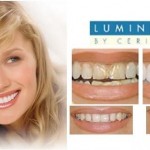
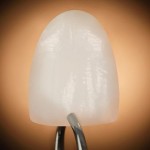
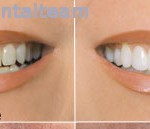
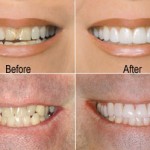
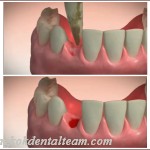
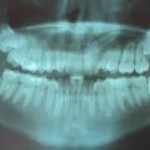
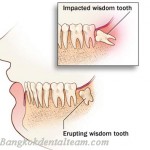
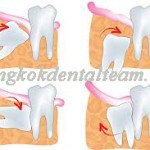
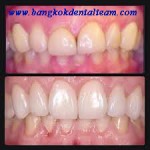
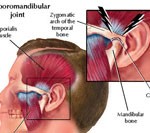



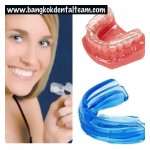
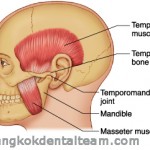

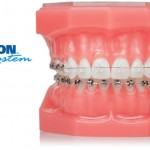
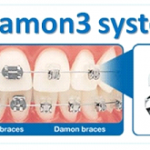
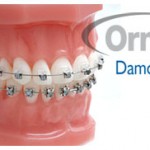
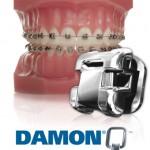
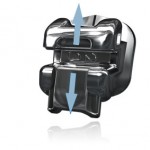
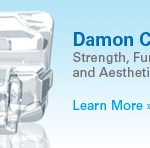
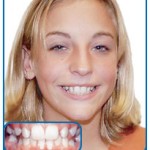

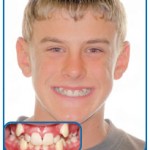
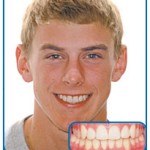
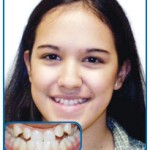
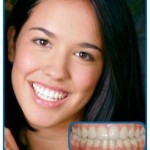
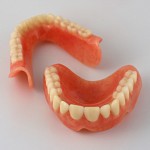
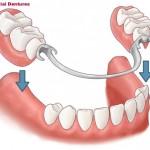 Partial Denture
Partial Denture